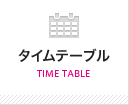2018.12.08
「闇に刻む光 アジアの木版画運動1930s-2010s」
Blaze Carved in Darkness: Woodcut Movements in Asia 1930s-2010s
On Air: Fukuoka City Information <in English> 2018.12.8(sat) 9:00~
The Fukuoka Asian Art Museum in the Hakata ward is now holding an exhibition entitled Blaze Carved in Darkness: Woodcut Movements in Asia 1930s-2010s.
Because woodcut artwork can be created with simple materials and easily replicated, not only professional artists but also people without formal art education have been making it. As a medium that directly depicts the artist’s feelings while addressing social problems and promoting cooperation with people in distant places, woodcut prints played an important role in the modernization of Asia.
After Chinese scholar Lu Xun promoted woodcut art in the 1930s, it became a huge movement and spread all over the country. In Japan, a number of exhibitions of Chinese woodcuts were held as it thrived during the post-war democratization movement, as well as when the democratization movement took place in South Korea in the 1980s.
Today, even with the age of the Internet upon us, some punk musicians and artist groups from Indonesia and Malaysia express their messages of freedom and independence through woodcut prints.
This exhibition is the world’s first show focusing on the woodcut movement in Asia, featuring woodcut prints made in China in the 1930s, the period when Lu Xun promoted the European woodblock prints in Shanghai, as well as woodprints created in Japan between the 1940s and 50s, Vietnam in the 1960s and 70s, South Korea in the 1980s and other Asian countries including Indonesia and Malaysia from the 2000s to recent years. With other artwork and prints being showcased, this exhibition contains about 400 art pieces.
The show will be held until Sunday, January 20th of next year. However, in addition to every Wednesday, the museum will be closed from December 26th to January 1st because of the New Year’s Holiday. It will be open on January 2nd of next year although it is Wednesday.
Visitors of this exhibition can also attend a special talk related to the exhibition at no cost. The topic of the talk is about the relationship between Lu Xun and Fukuoka-born painter Seiichi Kamata who had artistic exchanges with Lu. The talk is scheduled from 2 to 4pm on Sunday, December 16th at the Ajibi hall on the 8th floor, and once again the attendance is free. Various other talks, gallery tours and workshops will also be held, so please come by.
The Fukuoka Asian Art Museum in the Hakata ward is now holding an exhibition entitled Blaze Carved in Darkness: Woodcut Movements in Asia 1930s-2010s.
Because woodcut artwork can be created with simple materials and easily replicated, not only professional artists but also people without formal art education have been making it. As a medium that directly depicts the artist’s feelings while addressing social problems and promoting cooperation with people in distant places, woodcut prints played an important role in the modernization of Asia.
After Chinese scholar Lu Xun promoted woodcut art in the 1930s, it became a huge movement and spread all over the country. In Japan, a number of exhibitions of Chinese woodcuts were held as it thrived during the post-war democratization movement, as well as when the democratization movement took place in South Korea in the 1980s.
Today, even with the age of the Internet upon us, some punk musicians and artist groups from Indonesia and Malaysia express their messages of freedom and independence through woodcut prints.
This exhibition is the world’s first show focusing on the woodcut movement in Asia, featuring woodcut prints made in China in the 1930s, the period when Lu Xun promoted the European woodblock prints in Shanghai, as well as woodprints created in Japan between the 1940s and 50s, Vietnam in the 1960s and 70s, South Korea in the 1980s and other Asian countries including Indonesia and Malaysia from the 2000s to recent years. With other artwork and prints being showcased, this exhibition contains about 400 art pieces.
The show will be held until Sunday, January 20th of next year. However, in addition to every Wednesday, the museum will be closed from December 26th to January 1st because of the New Year’s Holiday. It will be open on January 2nd of next year although it is Wednesday.
Visitors of this exhibition can also attend a special talk related to the exhibition at no cost. The topic of the talk is about the relationship between Lu Xun and Fukuoka-born painter Seiichi Kamata who had artistic exchanges with Lu. The talk is scheduled from 2 to 4pm on Sunday, December 16th at the Ajibi hall on the 8th floor, and once again the attendance is free. Various other talks, gallery tours and workshops will also be held, so please come by.
어둠에 새기는 빛 아시아의 목판화운동 1930s-2010s
On Air: Fukuoka City Information <in Korean> 2018.12.8(sat) 20:46~
후쿠오카시 하카타구의 후쿠오카 아시아미술관에서 ‘어둠에 새기는 빛 아시아의 목판화 운동 1930s-2010s을 개최하고 있습니다.
목판화는 간단한 재료와 기술로 만들 수 있으며, 간단하게 복제할 수 있어 아시아 각국의 정치 및 사회운동 속에서 예술가뿐만 아니라 예술교육을 받지 않은 일반인들도 종종 제작해 왔습니다. 자신의 감정을 주체적으로 표현하고 사회적 문제를 폭로하면서 원격지 사람들과 연대를 추구하는 미디어로서 목판화는 아시아 근대화에 중요한 역할을 했습니다.
1930년대 중국의 문학자, 루쉰이 추진한 목판화는 거대한 운동체가 되어 중국 각지에서 전개되었습니다. 일본에서는 종전 이후 민주화운동 등을 통해 목판화가 성황을 이루어 다수의 중국판화전이 열렸습니다. 또한 1980년대 한국에서는 민주화운동 속에서 목판화가 다양한 수단으로 활약했습니다. 그리고 오늘날 인터넷 시대에 있어서도 인도네시아와 말레이시아에서는 펑크 음악가와 미술가 단체가 자유와 자립을 추구하는 메시지를 목판화로 끊임없이 발신하고 있습니다.
이번 전람회는 아시아의 목판화운동에 초점을 맞춘 세계 첫 전람회입니다. 루쉰이 상하이에서 유럽의 목판화를 소개한 1930년대부터, 40년대에서 50년대의 일본, 60년대에서 70년대까지의 베트남, 80년대의 한국, 2000년에서 현재까지의 인도네시아, 말레이시아 등 각국의 목판화를 소개. 미술작품과 인쇄물 등 약 400점이 전시됩니다.
전시 기간은 내년 1월 30일 일요일까지입니다. 매주 수요일 이외에 12월26일부터 1월1일까지는 연말연시 휴관이며 내년 1월 2일 수요일은 개관합니다.
또한 전람회 관련 행사로 참가비 무료의 스페셜 토크를 관람하실 수 있습니다.
루쉰과 루쉰에게 여러모로 지원한 후쿠오카 출신 화가, 가마타 세이이치와의 교류관계에 대한 이야기입니다. 개최일시는 12월16일 일요일 오후 2시부터 4시까지이며, 행사장은 8층 아지비 홀. 입장료는 무료입니다.
이밖에도 다양한 토크 이벤트와 갤러리 투어, 워크숍을 실시합니다.
많이 이용해 주시기 바랍니다.
黑暗之光 亚洲的木版画运动 1930s-2010s
On Air: Fukuoka City Information <in Chinese> 2018.12.9(sun) 8:46~
位于福冈市博多区的福冈亚洲美术馆正在举行展览,名叫「黑暗之光 亚洲的木版画运动 1930s-2010s 闇に刻む光 アジアの木版画運動1930s-2010s (Blaze Carved in Darkness: Woodcut Movements in Asia 1930s-2010s)」。
木版画使用的材料简易技术也不很高深,且容易复制,为此亚洲各地政治・社会运动中,不仅是艺术家们,没学过艺术的普通人也创作了许多优秀作品。直观抒发感情,揭露社会问题作为和远方人们合作的媒体,木版画在亚洲近代化进程中发挥了重要的作用。
1930年中国文学家・鲁迅推行的木版画运动发展到了全中国。日本在战后民主运动中木版画的人气上升,经常举办中国版画展。
韩国木版画也在1980年的民主运动中以多种形式蓬勃发展。今天互联网时代,印度尼西亚和马来西亚的朋克音乐家美术家团体,通过木版画传递自由和自立的意义。
本次展览首次聚焦亚洲木版画运动,从鲁迅于上海推广欧洲木版画的1930年代开始,40年代到50年代的日本,60年代到70年代的越南、80年代的韩国、2000年到现在的印度尼西亚和马来西亚等亚洲国家的木版画作品。美术作品及印刷作品共400多件。
展览到明年1月20日星期天结束。每周三和12月26日-1月1日年底年初休息,明年1月2日星期三开馆。
配合展览,举办可以免费参加的脱口秀。脱口秀介绍鲁迅和对他有很大帮助的福冈出身画家镰田精一(かまた せいいち)两人之间深厚的友情。时间是12月16日星期天下午2点-4点,会场在8楼的あじびホール礼堂,入场免费。除此以外还将举行其他的脱口秀、展馆游、创作讲座等活动。欢迎各位的光临。













